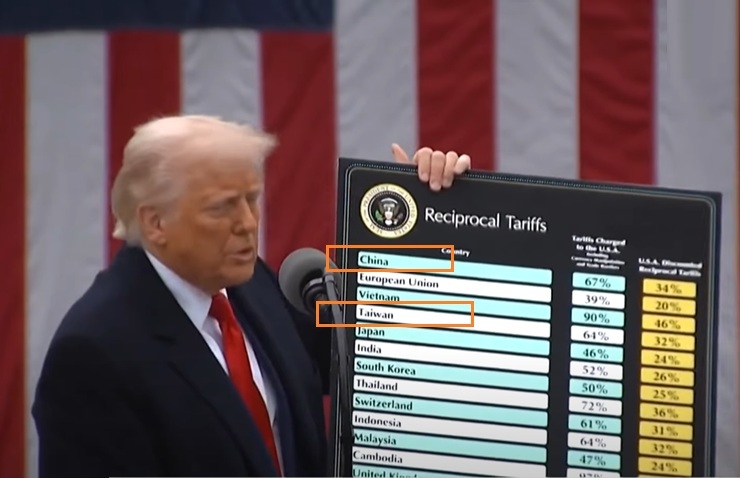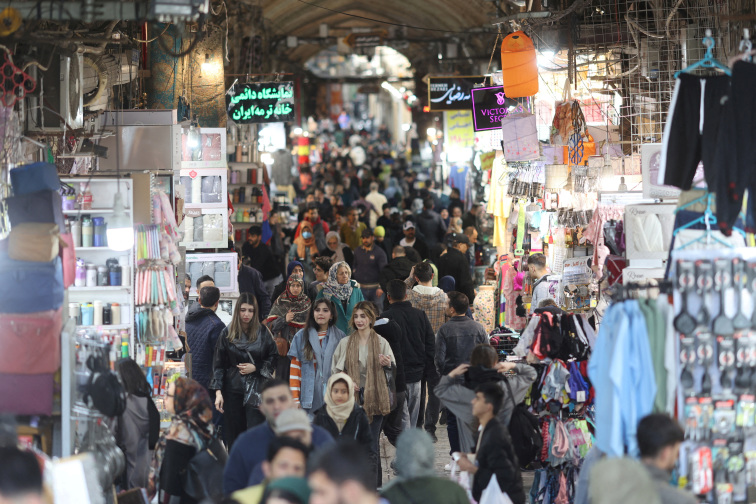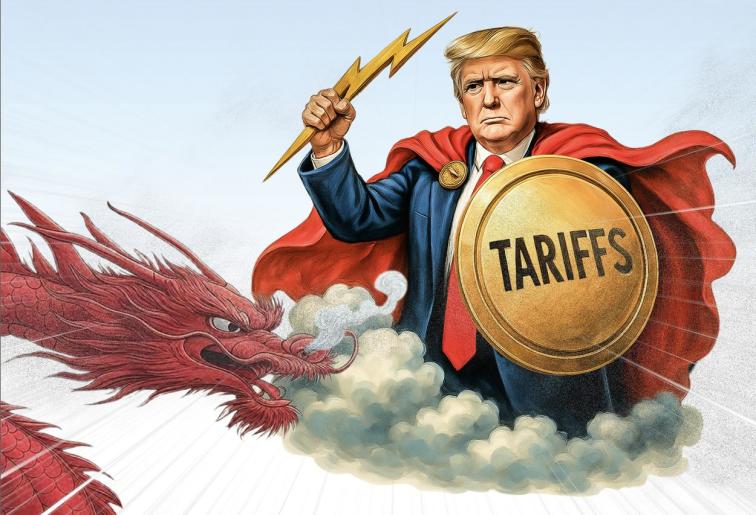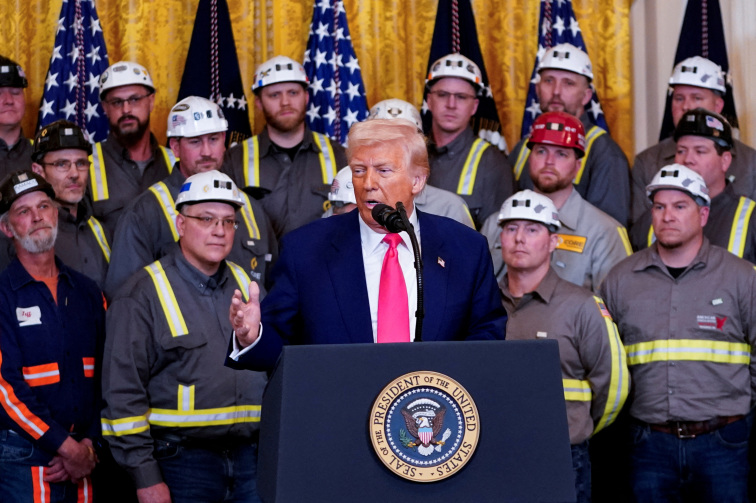U.S. President Trump announces a 34% tariff increase on Chinese goods. (Video screenshot)
[People News] On April 9, 2025, U.S. President Donald Trump announced a surprising adjustment to his tariff policy: a 90-day suspension of the “reciprocal tariffs” imposed on over 75 trade partners—excluding China—with the rate uniformly reduced to 10%. Meanwhile, tariffs on China were immediately raised to 125%. Following this announcement, U.S. markets experienced what was dubbed the “Great Miracle Day.” The Dow Jones Industrial Average surged nearly 3,000 points, the S&P 500 jumped 9.5%, and the Nasdaq skyrocketed 12.2%, marking the largest single-day gain in recent years. The panic that had gripped markets due to Trump’s blanket tariff plans vanished, and global markets rebounded in response. The White House stated that the move was aimed at focusing efforts on confronting China while providing room for negotiations with other countries, revealing that the true target of Trump’s trade war is the Chinese Communist Party (CCP).
Trump’s strategic pivot is considered a masterstroke: it both eased fears of a global trade war and concentrated pressure on the CCP. Over the past week, his plan to impose 10% to 50% tariffs worldwide had wiped out over $6 trillion in U.S. market value, as investors feared supply chain disruptions and uncontrollable inflation. The latest decision acted like a booster shot: the 90-day suspension not only reassured U.S. allies but also gave American businesses breathing room. Behind the “Great Miracle Day” lies investor recognition of Trump’s “retreat to advance” tactic—by lowering the threat to most countries, he successfully rallied allies to isolate China.
For the CCP, this is undoubtedly a heavy blow. China had previously announced retaliatory tariffs on 84% of U.S. goods, attempting to withstand Trump’s pressure. However, the 125% super-tariff strikes directly at China’s export lifeline. Already weakened by sluggish domestic demand and a debt crisis, China’s economy risks a wave of business bankruptcies and mass unemployment if exports to the U.S. collapse. Although Beijing has tried to stabilize its markets in the short term, such artificial intervention is unlikely to last. Trump’s move is not only an economic offensive but also a political one—meant to force the CCP to yield under international pressure.
For the U.S. and global economy, this adjustment brings short-term benefits. The surge in U.S. stocks boosts market confidence, companies can reevaluate supply chain strategies, and countries like Japan (with tariffs reduced from 24% to 10%) and the EU (from 20% to 10%) can breathe easier. However, long-term uncertainties remain. If the CCP resists to the end, an escalation of the trade war could impact the global economy; if negotiations fail, the reimposition of tariffs after 90 days could again shock markets. While Trump’s “target China alone” strategy has won initial applause, whether it can truly restore manufacturing and balance trade remains to be seen.
Overall, Trump’s tactic of “delaying most, isolating the CCP” showcases the flexibility and precision of his trade war approach. The “Great Miracle Day” in the U.S. markets reflects preliminary approval of his strategy, but the ultimate outcome depends on the CCP’s response and the global economy’s resilience. For now, Trump holds the upper hand, while the CCP faces an unprecedented crisis.
(First published by People News)










News magazine bootstrap themes!
I like this themes, fast loading and look profesional
Thank you Carlos!
You're welcome!
Please support me with give positive rating!
Yes Sure!